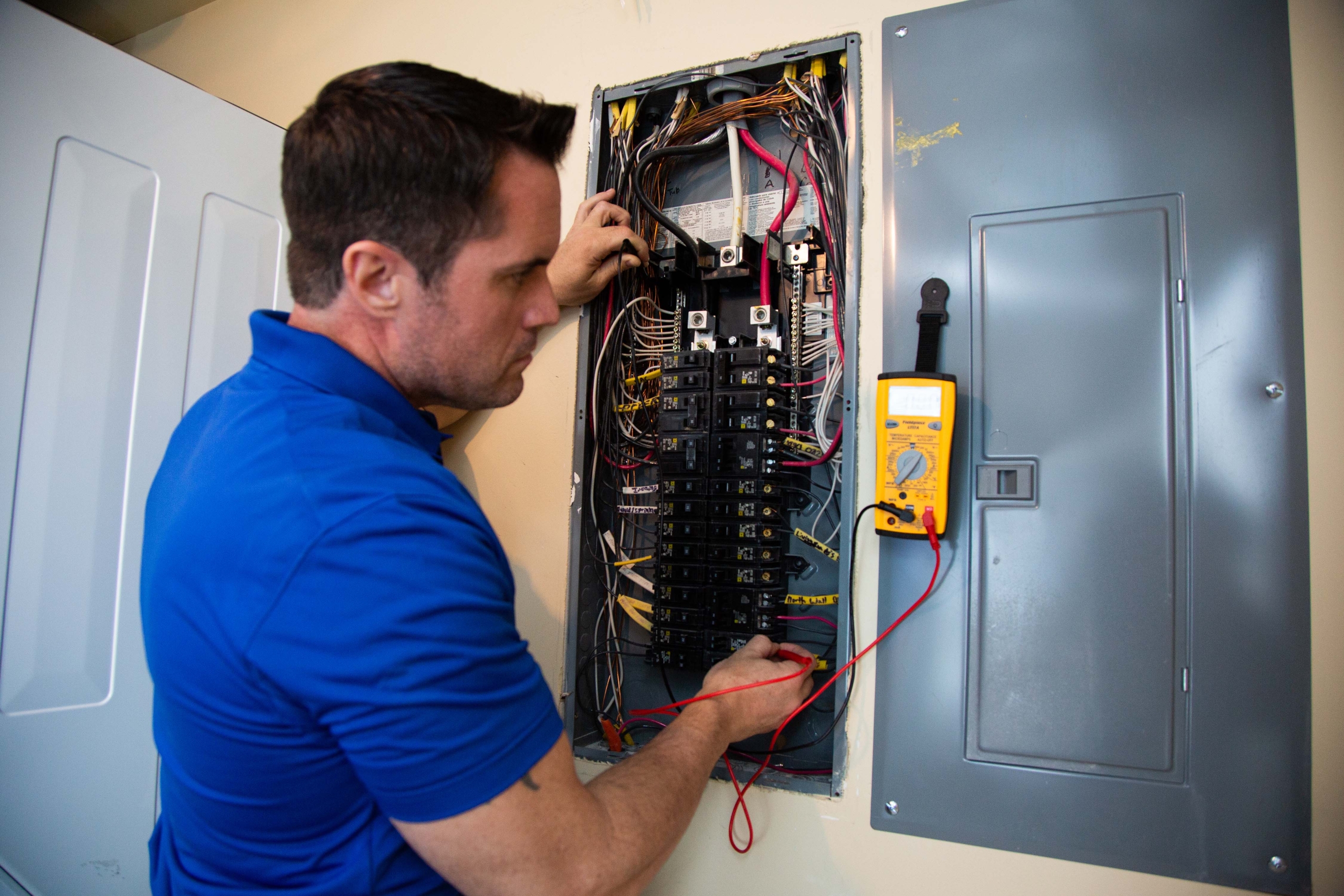How To Upgrade an Electrical Panel
The electrical system is one of the core units in a household. It is responsible for administering electricity to the light systems, televisions and stereos, and any other appliance that is plugged into a wall. Families are now, more than ever, using high rates of electricity, meaning the electrical panels located in every house, condo, or apartment, need to be in top shape to prevent any sparks, fires, or blown fuses.
What Is An Electrical Panel?
An electrical panel, also known as a circuit breaker panel, is a hub that distributes power to different circuits that all are connected to a source. Generally, it is a metal box that is bolted to the wall, with a series of switches located inside. Each switch is linked to a particular part of the home, for example, the refrigerator or the lights in a specific room. You can switch them on and off if you need to do some work, but they’ll also automatically flip if the panel senses an electricity overload to a specific area. This is for safety reasons, as a surge of electricity could cause a fire.
Fuse Box vs. Electrical Panel
Fuse boxes used to be the norm in home construction prior to the rising popularity of electrical panels. Many older homes that have not upgraded their electrical system usually still have fuse boxes. Visually, electrical panels have labeled switches on the inside, whereas a fuse box has small circular fuses for each circuit in the home. Fuse boxes have been phased out over time for a few reasons. When a switch trips in an electrical panel, you simply have to flip it back to reset it. When a fuse blows in a fuse box, you have to go in and repair the circuit before you can do anything else. Additionally, fuse boxes can’t accommodate the amount of electricity used in modern homes, making them more of a nuisance than anything.
Upgrading Your Electrical Panel
Because the electrical panel is responsible for household safety, it is important that you keep it up to date over the years. There are two main reasons for upgrading your panel, it’s getting too old or you’re adding electrical appliances to your home.
- Age. Many electricians recommend that an electrical panel should have a lifetime of 25-40 years. If your home is getting to that age and the panel hasn’t been updated, it is probably time to upgrade.
- New appliances. If you’re installing a multimedia system or other major appliances that will surge the amount of electricity you normally use, it is best to rewire your panel to accommodate for the new, increased amount of power you’ll be needing.
Other Signs to Upgrade Your Electrical Panel
Aside from the two main reasons that lead homeowners to upgrade their system, there are other signs that may indicate it’s time for a new electrical panel.
- Faulty wiring. Faulty wiring is one of the biggest causes of household fires in the United States. The older the wiring gets, the more likely it will start to fall short. The main indicators of faulty wiring are flickering lights, small electrical shocks when you touch an appliance, a burning scent, scorch marks on power outlets, and the electrical is warm to the touch. If you notice any of these signs, it is best to call a professional electrician immediately.
- Electrical system wear and tear. Over time your electrical system will start to wear. Depending on your electrical use, your panel may need an upgrade far before the end of its lifetime. Signs of wear and tear can include crackling, buzzing, and sizzling noises, appliances not working at their full capacity, and your utility bill being uncharacteristically high.
- Increased use of power strips. Americans are using more electricity now than ever before. With laptops, tablets, and phones constantly needing charging, you may have noticed an increased number of power strips being used. This is a sign that you may be using more electricity than your home is wired for. If this is the case, upgrade your electrical panel to accommodate a higher voltage. Additionally, be sure your power strips have surge protectors for safer usage.
- Selling your home. If you’re planning on selling your home, you may be looking at adding some new aspects to make it more marketable. Being able to offer a recent electrical upgrade is an excellent selling point. It not only highlights the increased electrical capability of your home but also indicates a higher level of safety and protection against potential electrical fires.
How Much Does It Cost?
Depending on how much upgrading needs to be done, the cost of your new panel project may vary. Generally, the price for upgrading a 100 amp panel or a 200 amp panel lands around $600-$2,500. But, depending on the number of amps, the price will go up. For example, if you’re looking for something closer to 400+ amps, the price will sit roughly between $2,000-$4,000. The best avenue for upgrading your electrical panel is to get quotes from two or three certified and experienced electricians.
Can I DIY Upgrading My Electrical Panel?
Replacing or upgrading an electrical panel can get pretty expensive. Because of this, you may look into do-it-yourself methods. This is generally considered to be a bad idea. In fact, in some states, it is actually illegal to work on an electrical panel without a certified electrician. Doing your own electrical rewiring can be extremely dangerous. You can not only hurt yourself in the process of touching the wires, but if you do a poor job, you could risk fires in your home down the line. It is recommended that you seek out a professional and qualified electrician to handle your electrical panel upgrades.
Expert Services- Plumbing, Heating, Air & Electrical
Expert Services- Plumbing, Heating, Air & Electrical has been handling electrical work in Salt Lake and Utah counties for over 10 years. Our team of vetted, trained, and experienced electricians provide a safe and professional experience. No matter how big or small your electrical needs may be, we are at your service. And with 24/7 emergency help, we will be there for even those unforeseen emergencies. Call us today!

